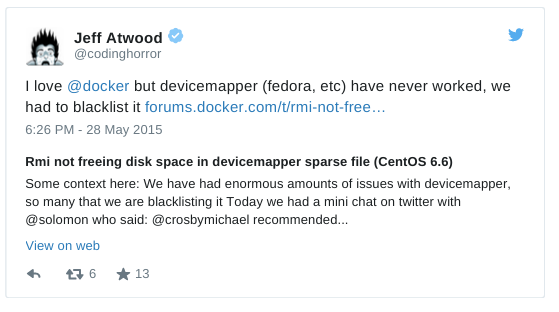Recently, I blogged about docker-on-loopback-storage woes and workarounds – a topic that came up during several conversations I had at last month’s Dockercon. Another frequently-discussed item from the conference involved Docker on CentOS 6, and whether and for how long users can count on running this combination.
Docker and CentOS 6 have never been a terrific fit, which shouldn’t be surprising considering that the version of the Linux kernel that CentOS ships was first released over three years before Docker’s first public release (0.1.0). The OS and kernel version you use matter a great deal, because with Docker, that’s where all your contained processes run.
With a hypervisor such as KVM, it’s not uncommon or problematic for an elder OS to host, through the magic of virtualization, all manner of bleeding-edge software components. In fact, if you’re attached to CentOS 6, virtualization is a solid option for running containers in a more modern, if virtual, host.
 Attending
Attending 